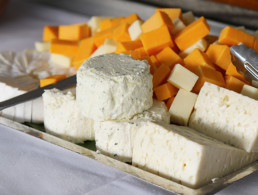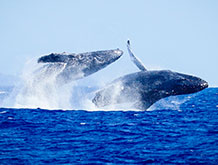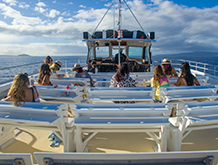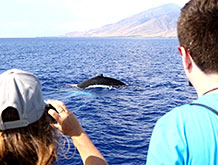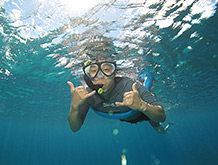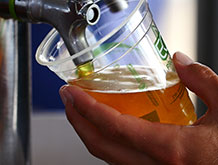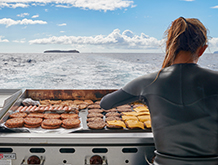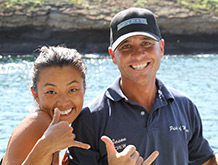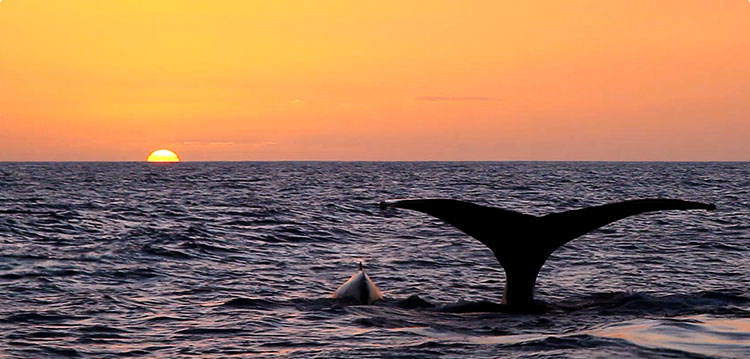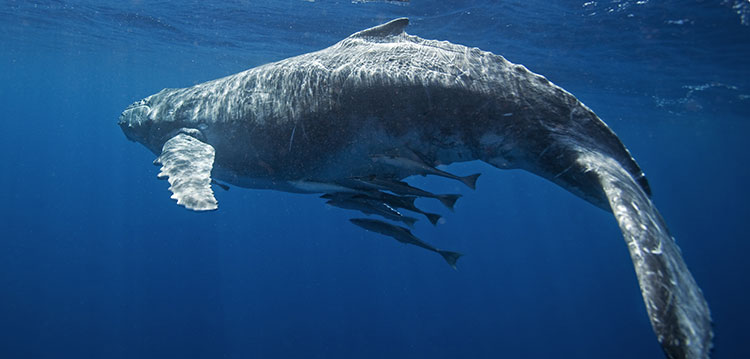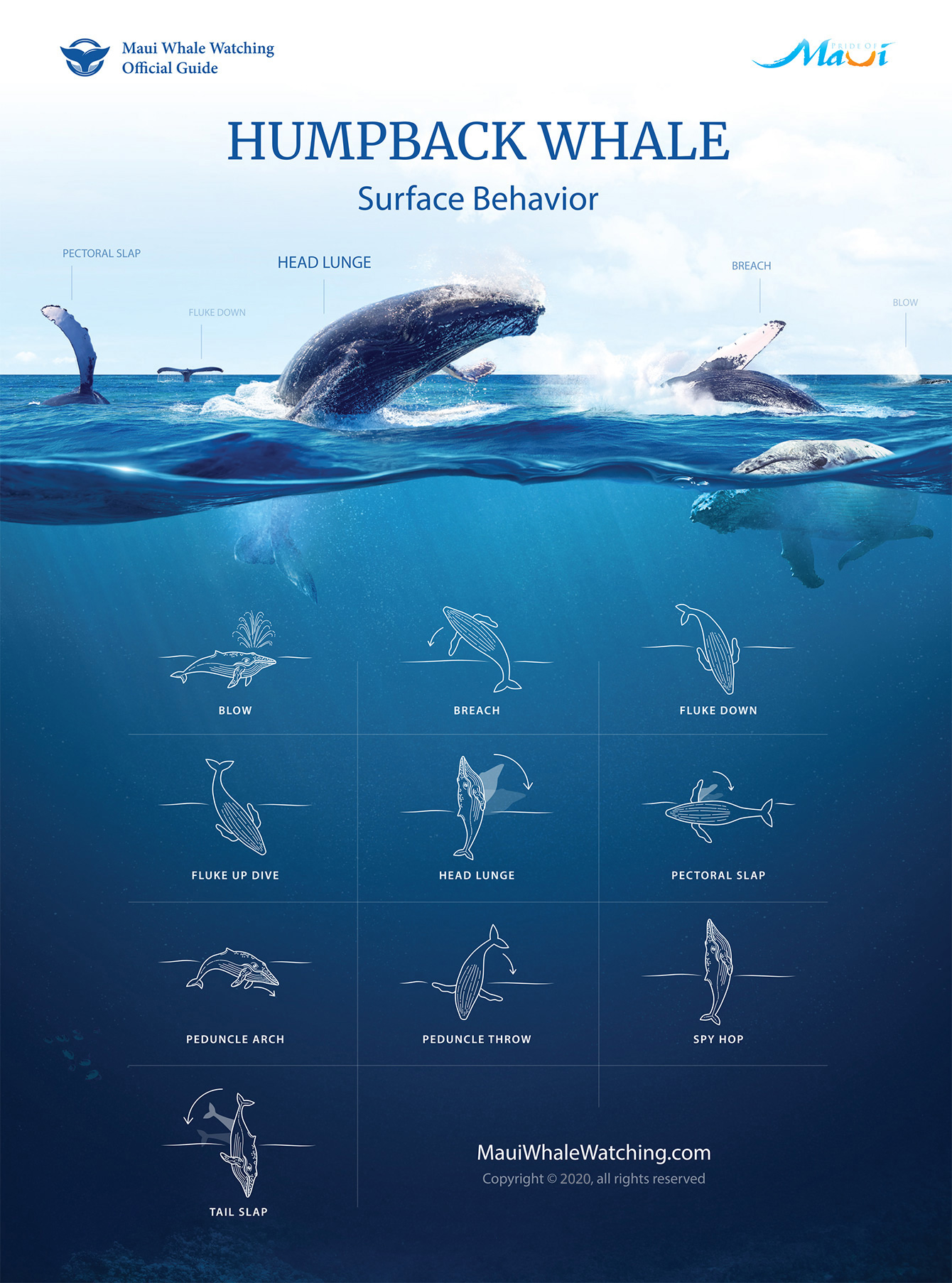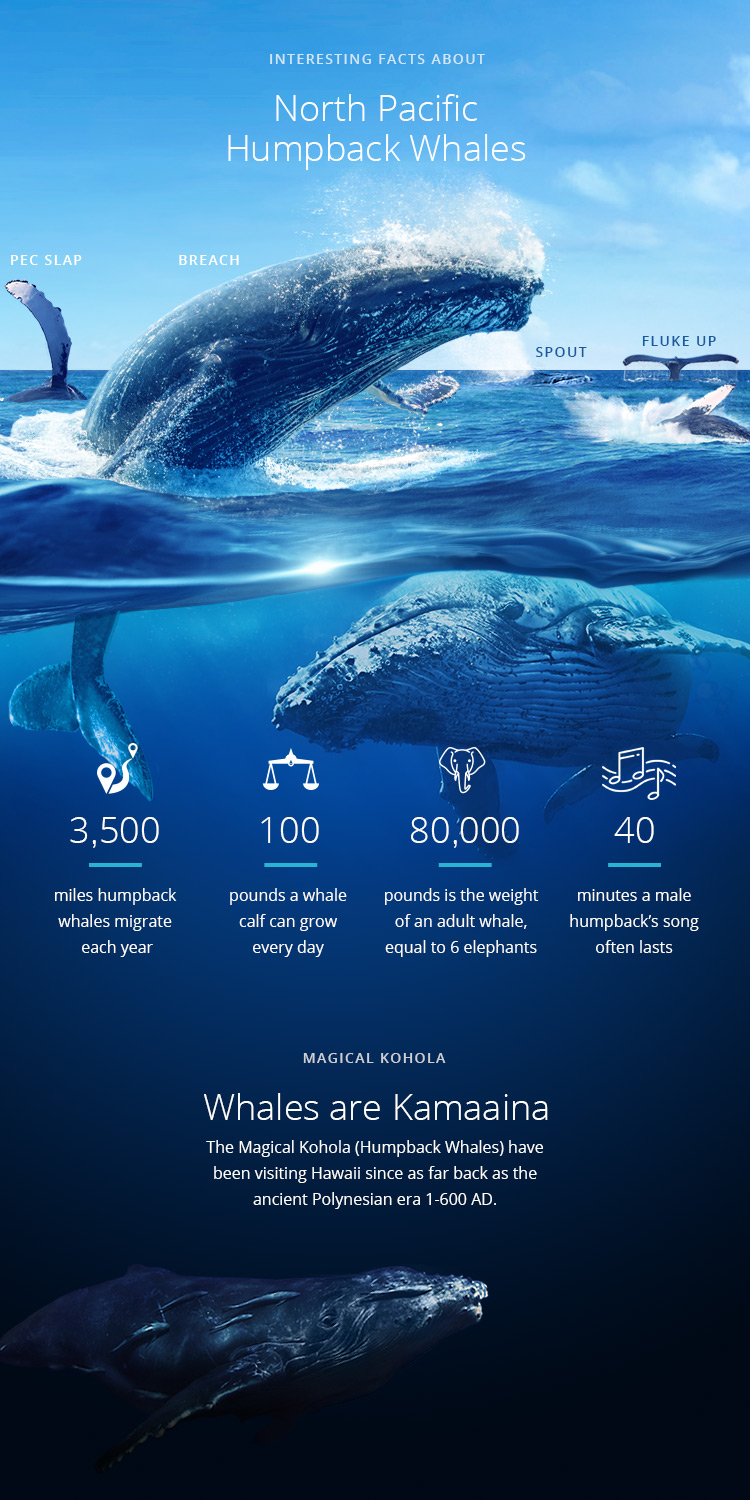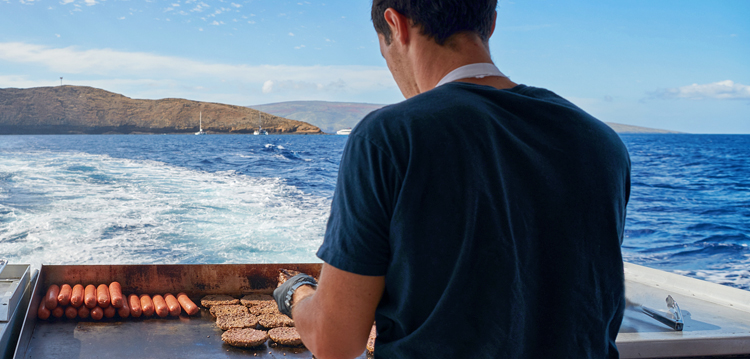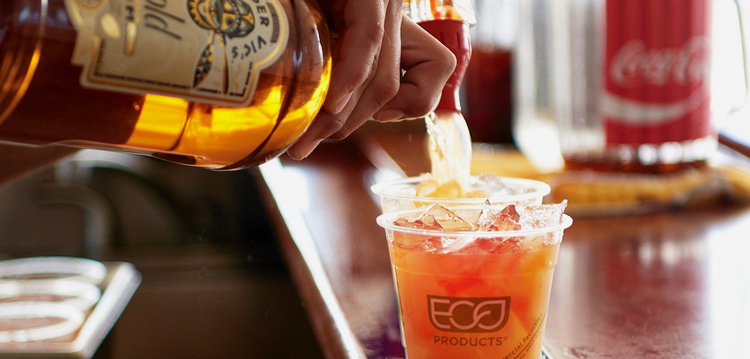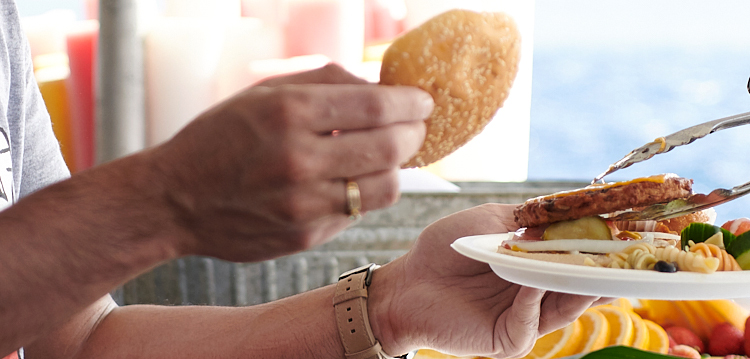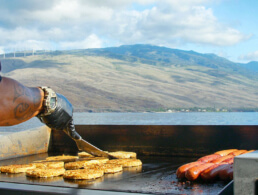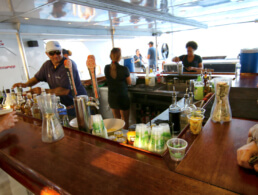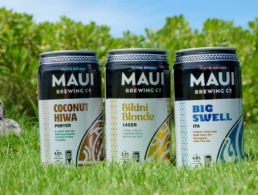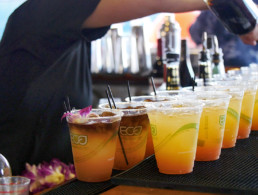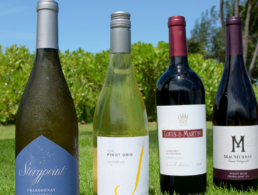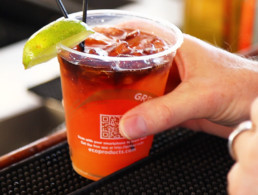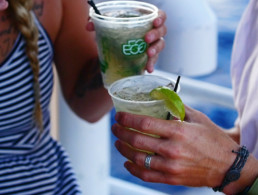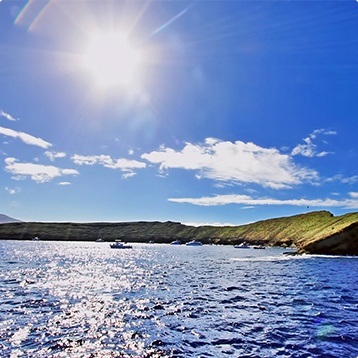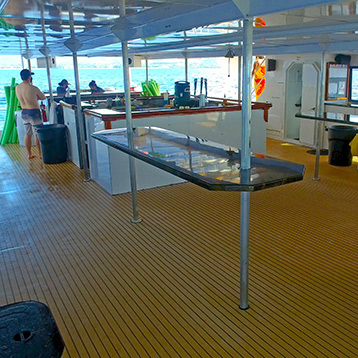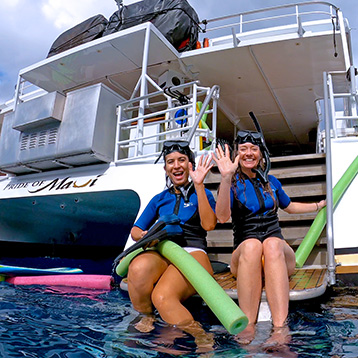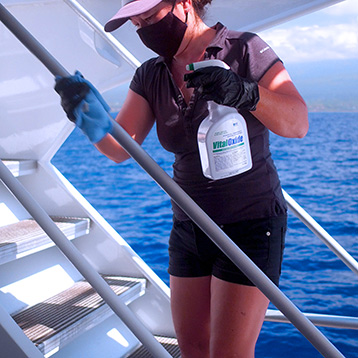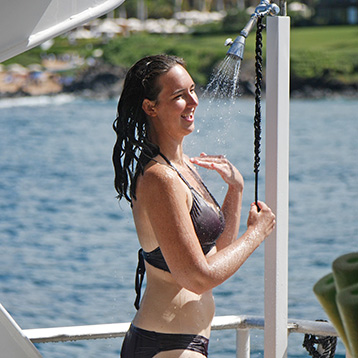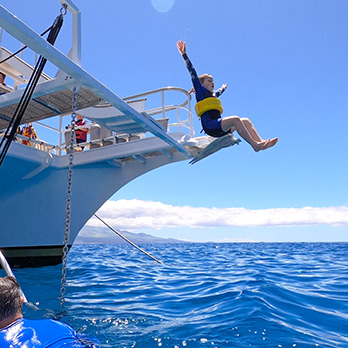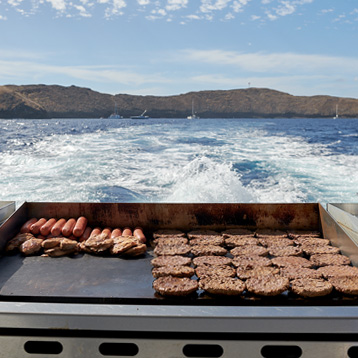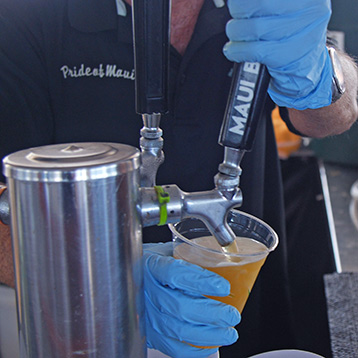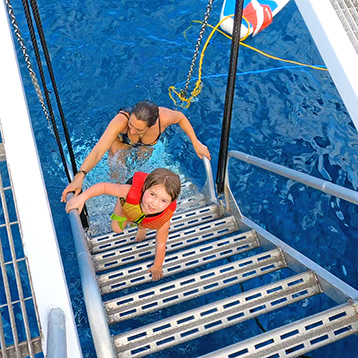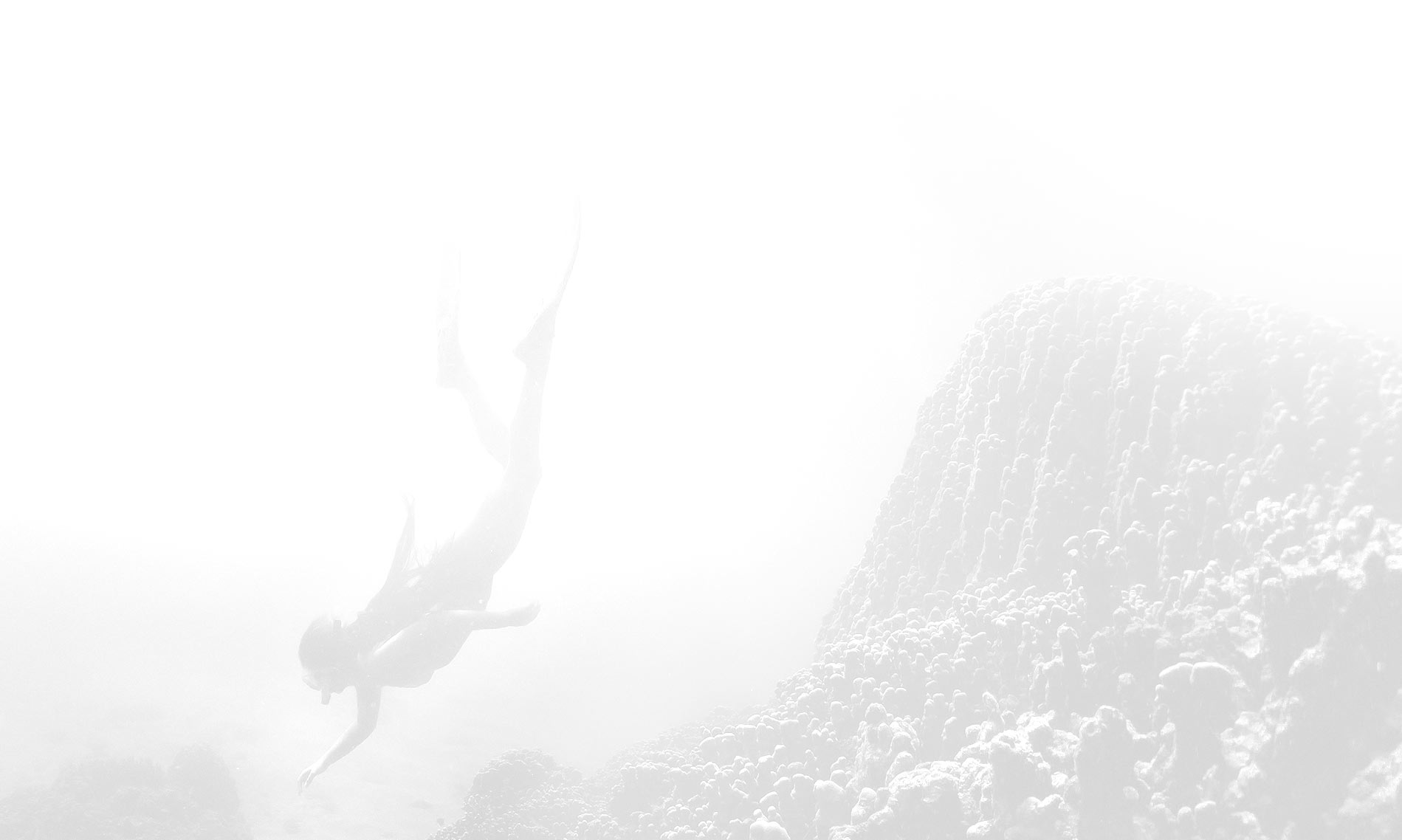Whale Watch Online Price
Price includes freshly prepared BBQ lunch, premium open bar, and snorkel gear
-
Adult$108(save $20)Regular $128
-
Child6 - 12$88(save $20)Regular $108
-
Infants5 years & underFree
-

Maui's Best Whale Watching Guaranteed Whale Sightings
-

Service & crew Onboard Naturalist & Expert Crew
-

Delicious food Complimentary BBQ Lunch
-

Open bar Open Bar offering Micro-brewed Beers, Wine & Mai Tais
-

Destination (Daily) Sights along the majestic Maui Coast
-

Where to board Maalaea Harbor, North Dock
(Left of USCG) Directions to Maalaea Harbor -

Boarding / check-in 1:45 pm
-

Trip Duration 2 pm - 6 pm
Gear
- Camera
- Towels
- Sunglasses
- Reef Safe Sunscreen *For purchase
ID Card
Picture ID required to consume alcoholic beverages
Available onboard to rent
Wetsuits
Binoculars
Pride of Maui Whale Watch
vs. The Others
Pride of maui
All-inclusive whale watch snorkel combo
- 4 Hours
- Freshly prepared BBQ lunch
- Premium Open Bar
- Snorkeling included
Best Value
Our Competition
General whale watch excursion
- Only 3 hours
- Premade lunch
- No open bar
- No snorkeling
General Value
MAUI WHALE WATCHING & SNORKEL TOUR
Maui’s best whale
watch value
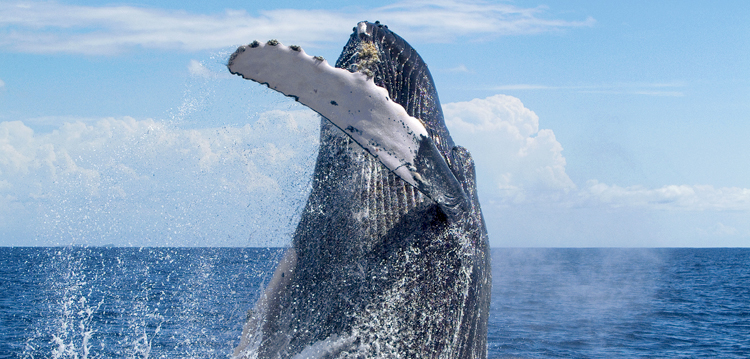
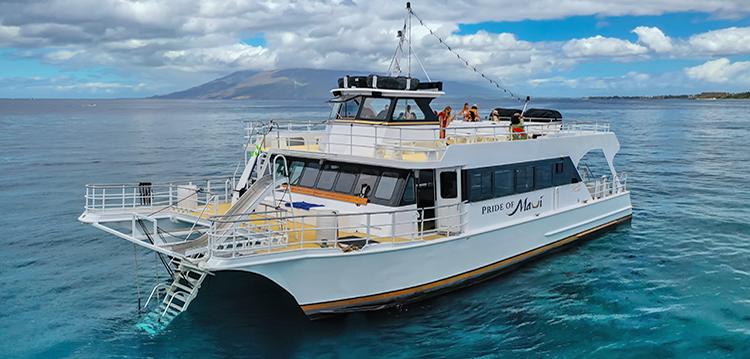
Our Maui whale watching tour is truly an exceptional vacation value. You’ll enjoy a full two hour whale watch combined with snorkeling a beautiful coral reef.
Pride of Maui is the most stable and spacious boat on Maui with incomparable amenities including two restrooms, glass bottom, water slide, submerged boarding ladders, warm showers, a large hardwood bar and over 2500 feet of open deck space.
Every year from December through March the North Pacific humpback whales migrate to the warm tropical waters of Hawaii. The coastal waters of Maui enjoy the largest concentration of these amazing animals by far. Whale Watching in Maui is commonly considered some of the best in the world. Whale Watching aboard our flagship Pride of Maui is even better.
During your whale watch cruise, these amazing animals will often display themselves in full glory, giving you the ultimate whale watching on Maui experience. You may witness a mother whale frolic with her calf or a full-grown adult breach exuberantly out of the water. Sightings of these playful behemoths, which grow as large as fifty feet and weigh about one ton per foot, are GUARANTEED on our Whale Watch Tour. Whales will be sighted, or your next whale watch tour aboard the Pride of Maui will be complimentary.
What you can expect
January 3rd - March 30th
Maui whale season
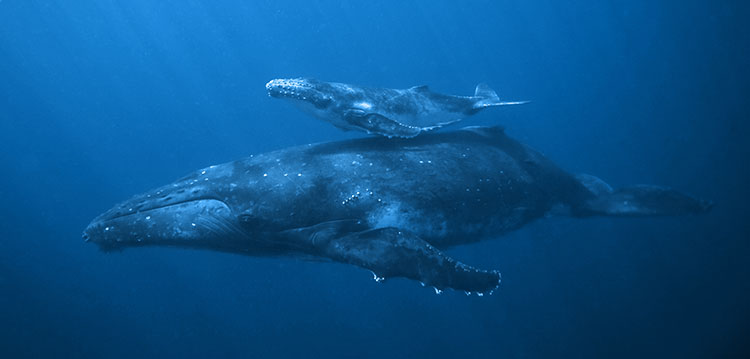
For more than one reason, the Island of Maui is consistently rated the Best Island in the world. Not only do the visitors and happy locals of Maui know this, but so do the humpback whales. Year after year, the humpback whales travel from cool Alaskan waters all the way to warm Hawaiian oceans for their annual winter breeding.
They are first spotted in Maui’s waters as early as October and their presence gradually increases as more pods and escorts finally arrive in Hawaii just in time for the holiday season. Maui’s Whale Season runs from mid-Fall to April. The peak season for watching whales is generally during the latter part of the season; January, February and March.
Humpback Whales
What you'll see
Some common behavior displayed on a whale watching trip includes blowing and spy-hopping. They’ll also slap their tails, which is believed to be an act of communication and to demonstrate their individual strength. Spy-hopping is when the humpback whales come high out of the water to have a look around at the world above.
A mature North Pacific humpback whale averages about 40ft in length and weighs about 40 tons, although they’ve been known to grow up to 16 meters or 52ft long. Their heavy bodies can weigh up to 50 tons. The heart alone is about 400lbs or more. The size of these whales makes them hard to miss, especially when they swim in groups. Female whales are slightly larger in order to defend themselves and their nursing calves from the more aggressive males.
Data compiled and sponsored by The State of Hawaii Department of Land and Natural Resources, National Marine Sanctuaries (Hawaiian Islands) and The National Oceanic and Atmospheric Administration (NOAA).
The North Pacific humpback Whale is a baleen whale (toothless), which is an endangered and protected species.
Whale watching on Maui is as good as it gets, with the opportunity on any given trip to see numerous animals displaying a variety of interesting and memorable behaviors. Newborn calves, in addition to being adorable, are curious and often bring mom to the boat for a close encounter. As a protected animal, it is unlawful to approach these majestic animals at a distance less than 100 yards during a Maui whale watch and we adhere strictly to these regulations.
It is not uncommon for the whales to approach us as we sit idle in the water. Close encounters initiated by the whales are common on a whale watching tour on Maui.
Maui Whale Watching & Snorkeling
Maui Snorkeling
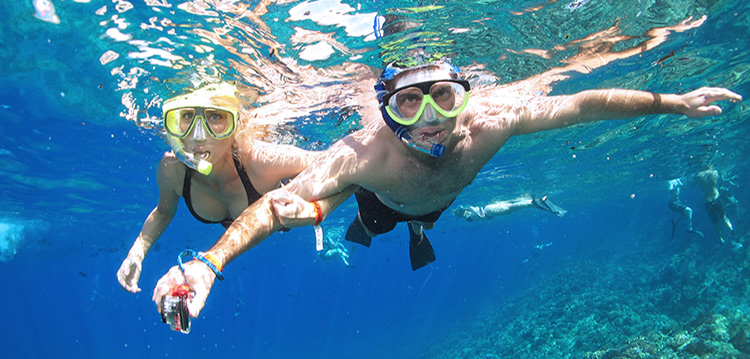
Snorkeling while on a Maui Whale Watching tour is truly the best of both worlds. You’ll get to see North Pacific humpback whales in all their immense glory, while also snorkeling in some of the most diverse underwater worlds. It’s an experience quite unlike any other.
devices
Jackets
rental$10 PER SUIT
Snorkeling in Maui is an absolute must-experience. You will revel in the beauty and take delight in observing the behaviors of tri-colored Moorish idols, rainbow and many more varieties of butterflyfish, ornate angelfish, saddle wrasse, triggerfish, and so much more.
Whale Watch Tour
Why choose us?
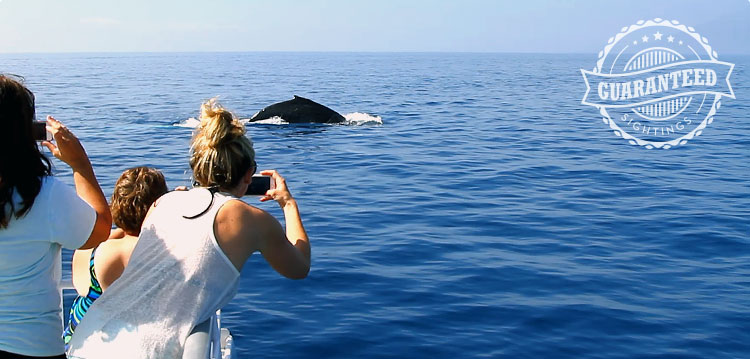
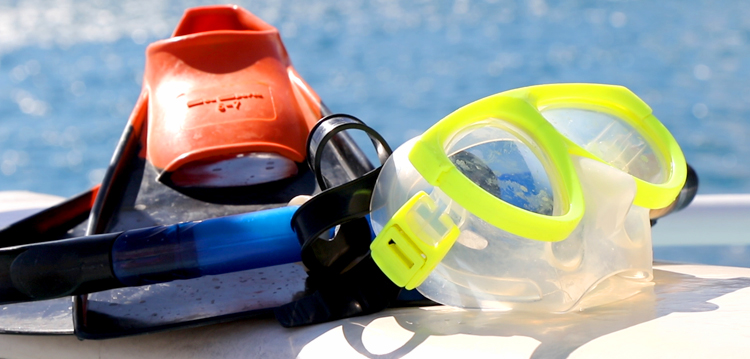
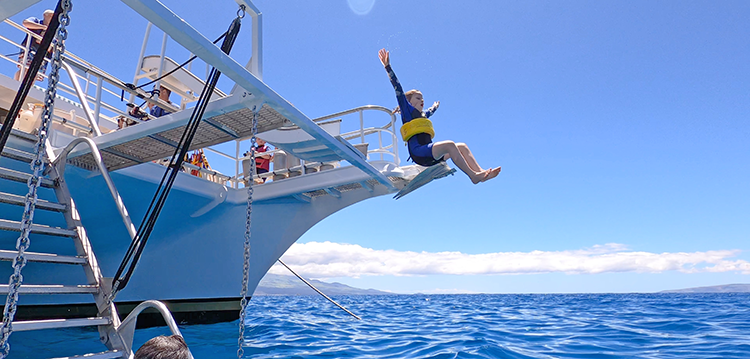
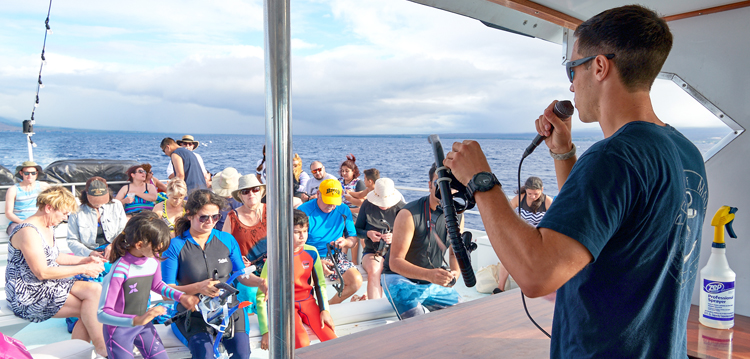
December is when the whales arrive, and they are not in full numbers until mid-January.
Whale sightings are guaranteed January through March only. Our guarantee includes a free pass for your next whale watching tour if no whales are sighted on your trip. Whale sightings are not guaranteed in December or April due to whale migration patterns during the arrival and departure periods. The whale sighting guarantee is good for free passes only, no refunds or cash value.
jackets
devices
rental
We provide all of the sanitized snorkel gear that you will need so that you can have the best experience possible while looking for whales and other amazing underwater life. For your convenience, we also have wetsuits available to rent.
viewing
deck
bottom
shower
slide
access
grill
hardwood bar
Pride of Maui is BIG, and yes, bigger is better! Her sprawling observation deck offers panoramic viewing free from obstruction and ample opportunities for taking photos.
She comes equipped with a glass bottom, large hardwood bar in the main cabin, Wolf commercial BBQ grills, two restrooms, warm freshwater showers, submerged ladders for easy entry and exit from multiple locations, and a jumbo water slide for fun entries more than 10 feet off the water.
& Crew
orientation
equipment
certified
certified
license
Trained
with PAD
instructors
Your safety, above all, is the most important to us. Our owners have been in business for nearly 40 years, and it shows in our daily operation. Your crew is certified and proficient in life-saving skills and CPR. Captains provide comprehensive site orientation and snorkel lesson right onboard for those with little or no prior experience.
We post lifeguards in the water and on deck for your safety and assistance. Our modern vessel comes equipped with the latest navigation and emergency equipment, and your highly-trained crew is proficient in all aspects of passenger and safe vessel operations so that you can relax it take it all in.
Special offer
Use discount code WHALES184 and maximize your savings!
Adult
$108
$128
Child
$88
$108
ONLINE SAVINGS
$20
Destinations
Sights along the majestic Maui Coast
Trip Duration
4 hours
(2 PM – 6 PM)
Availability
Daily
Interesting facts
About Humpback
Whales in Hawaii
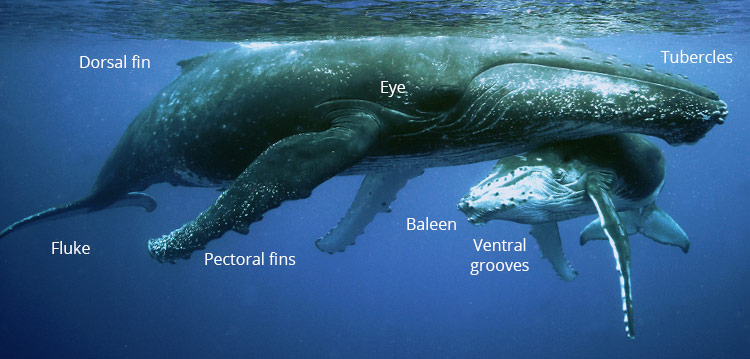
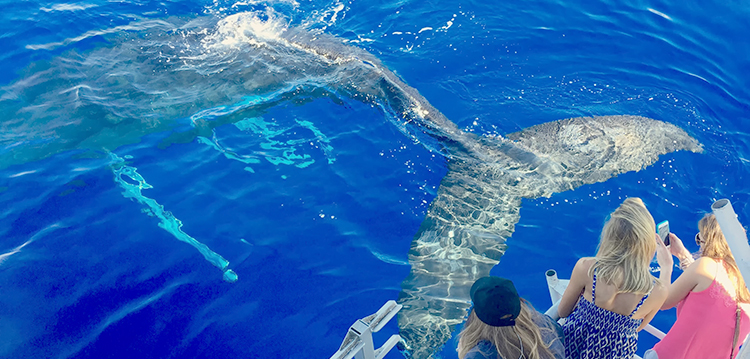 [sc_embed_player fileurl="https://media-prideofmaui.netdna-ssl.com/wp-content/uploads/2017/01/bbc_humpback_whale_song_14_48k.mp3"]
[sc_embed_player fileurl="https://media-prideofmaui.netdna-ssl.com/wp-content/uploads/2017/01/bbc_humpback_whale_song_14_48k.mp3"]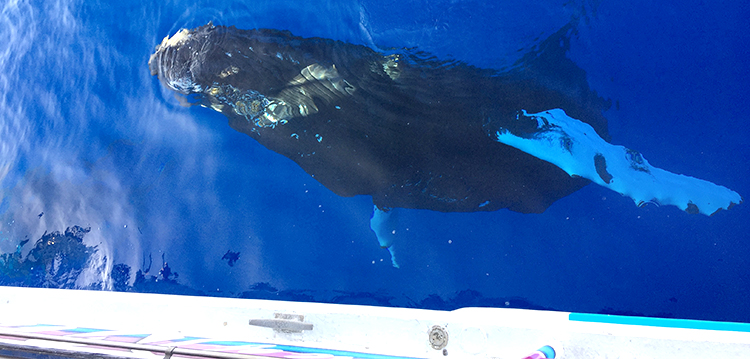
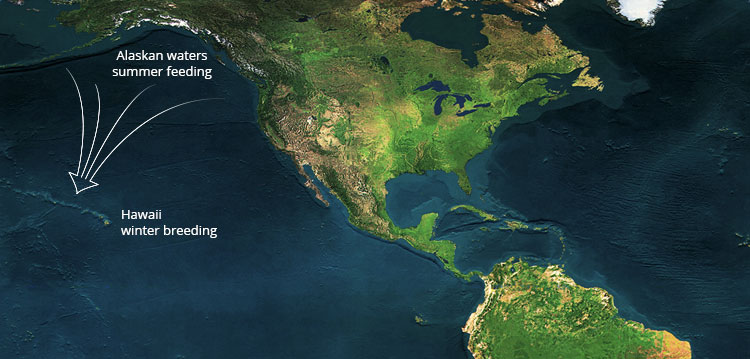
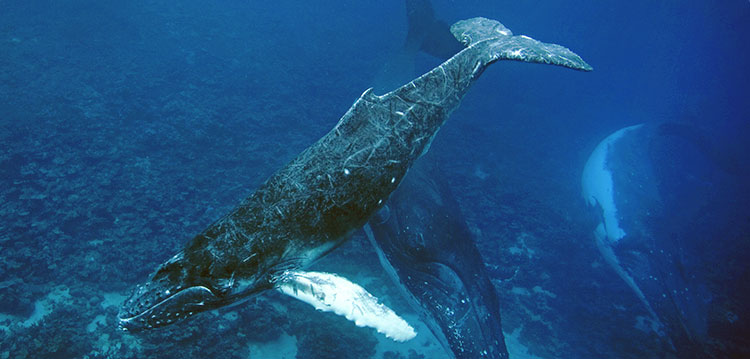
North Pacific humpback whales are the can weigh anywhere between 25-40 tons (50,000-80,000 lbs), and approximately 1-ton (2,000 lbs) as newborns. They can grow up to 60 feet in length, the females being the larger sized of the breed. The humpback whale’s upper (dorsal) body is primarily a dark shade of grey, with distinct areas of white on their flippers (pectoral fins) and under (ventral) bellies. On average, the North Pacific humpback whale can live for about 50 years (although there have been accounts living up to 90 years), and reach sexual maturity between 5-7 years old.
The North Pacific humpback whales feed on small crustaceans, krill, plankton, and small fish, consuming up to 3,000 lbs of food per day. Humpbacks don’t ever feed in Hawaii’s oceans; they only feed during their Alaskan Summers, focusing on storing strength and the blubber that they will live off of during their annual Winter migration to Hawaii.
The dorsal fin is located about 2/3 of the way down their backs. It has a slight hump on the forward edge.
The fluke is a humpback's tail. It helps to propel them through the water. Each whale has black and white markings on the bottom side of the tail which are unique to each one like fingerprints are to us.
Most North Pacific humpbacks have black pectoral fins. The fins can grow up to 15 feet in length.
The humpback whale's eye is about the size of an orange and is located just behind the mouth.
Humpback whales use baleen to feed. Baleen whales do not have teeth. They gulp in large amounts of water and use baleen to filter out small prey.
Ventral pleats, or grooves, allow the humpback whales to expand their throat greatly while feeding.
The rostrum is the front part of the whale's head. Humpbacks have little bumps on their rostrum called tubercles.
The male humpback whales are driven to mate with the females and pro-create. It is common during the heat of the Maui whale watching season to find large competitive groups (pods) of male humpback whales jousting for the opportunity to mate with a single female. Watching them is an exciting experience as they wrestle with each other for the position to mate.
The female humpback whales with newborn calves are particularly vulnerable to the advances of the males during the Maui whale watching season. Sometimes during our whale watch, we are mugged (an affectionate term) by the female and her calf as she uses our large yacht to hide under in an attempt to ditch the hopeful males. Other times, curiosity causes them to come closer to us. Being mugged on a whale watch in Maui by humpback whales is the ultimate whale watching experience where photo opportunities give way to cherished memories.
The original Endangered Species Conservation Act (ESCA) of 1969 has been amended and updated as The Endangered Species Act of 1973. This Act was the first of its kind to protect marine species in danger of extinction from common threats including poaching and hunting for sport. Before the Act, the humpback whales were maltreated and had no protection. The foreseeable future for the humpback whale species was at a great risk.
Working in conjunction with various marine related non-profits and education-based activity tour companies, the ESCA and the MMPA are responsible for protecting the growing numbers of the magical humpback whale species.
Pride of Maui goes to great lengths to educate guests on the habits and beauty of the humpback whales as well as ensure that their practices are at the highest standards of safety for the ocean, marine life and guests. All tours are in line with the most recent Marine Conservation practices. Pride of Maui vessels are top of the line; boat Captains and staff are educated and expertly trained.
Humpback whales migrate 3,500 miles from Alaska to Hawaii every year. It takes them 4-8 weeks to complete this journey. Alaska is their feeding ground, and Hawaii is their breeding and birthing ground. The island of Maui offers sheltered water where the females can more safely give birth and raise their young.
Whales are mammals and the calves are fed with their mother’s milk. While suckling, it is believed they may be safer from predators in the sheltered Maui waters, as opposed to the open ocean or less protected seas.
Whales start migrating to Hawaii in December and leave in April. Past year sightings have been as early as October, staying in Hawaiian oceans as late as June. The peak time to watch whales in Maui is in February during mating season, with March coming in second.
Humpbacks are still a huge mystery. There have been no recorded sightings of humpback whales mating or giving birth.
During the late season, as the whales are preparing to leave the Hawaiian waters, male bulls come to escort a female and her calves out of the Hawaiian channels. It is quite common to see “competitive pods” of males at this time. (Males fighting amongst each other to win over and impress the females.) Male humpback whale competitive pods can be very aggressive; head slapping, tail slapping, and breaching upon each other sometimes resulting in bloodshed.
Humpback whales are not monogamous! They are believed to be promiscuous breeders, and the males do not play a parental role in the lives of their calves. Genetic testing shows that over the breeding life of an individual female, calves will have different fathers.
Baby humpback whales are in utero for 11-12 months. When born, they can be between 12-14 feet in length, and weigh 1-1/2 tons. Surviving off their mothers 50% fat milk, the calves grow at least 1-inch and gain approximately 100 pounds per day.
Complimentary Lunch & Open Bar
Freshly prepared
BBQ lunch
Your freshly prepared BBQ lunch includes cheese and crackers, big juicy burgers, jumbo hot dogs, potato chips, fresh fruit, and marinated chicken breasts, as well as a premium open bar with ice-cold micro-brewed beer, regional wines, and tropical Mai Tais. Delicious homemade Macadamia white chocolate chip cookies are baked fresh daily for your enjoyment.
- Cheese & Crackers
- Cheeseburgers
- Marinated Breast of Chicken
- Jumbo Hot Dogs w/ all the fixings & Potato Chips
- Fresh Fruit
- Macadamia White Chocolate Chip Cookies
If you have vegetarians or vegans in your party, please give us a call on our customer service line at 808.242.0955, at least 72 hours in advance. Mahalo!
Please note: Our delicious BBQ lunch is typically served from 3:30pm-4pm after our water activities.
If you have vegetarians or vegans in your party, please give us a call on our customer service line at 808.242.0955, at least 72 hours in advance. Mahalo!



